Content
Cabbage is one of the most difficult vegetable crops to grow, especially if you try to grow its seedlings in an ordinary apartment with central heating. Nevertheless, many novice, enthusiastic gardeners go for it, tempted by the attractive picture of an appetizing head of cabbage on the seed package. But before you can enjoy such a spectacle in your garden, you will have to go through a fair number of tests. After all, cabbage has many enemies in the form of insect pests and various diseases. She is also very demanding of various growth conditions, and usually her requirements do not at all coincide with those that people strive to create for her. Therefore, almost everyone’s cabbage seedlings turn yellow - this is almost a normal condition under certain conditions. But this same picture is a symptom of dangerous diseases and problems when urgent measures need to be taken. That's why we need to figure everything out in order.
Diseases and pests
When yellow leaves appear on cabbage seedlings, first of all, it is necessary to eliminate all the most dangerous factors for the plant.
Insects - pests
There are quite a lot of enemies who want to feast on juicy cabbage leaves.But most of them appear already when cabbage is planted in the ground or when seedlings are grown directly in the garden bed.
They are able to migrate to cabbage seedlings from nearby indoor plants.
- Aphid quite clearly visible on the leaves with the naked eye. These are small light green or translucent oval-shaped insects, up to 5 mm in size, that live in large numbers on different parts of plants and suck the juice from them.
- Spider mite is found on the reverse side of the leaf in the form of small, almost imperceptible cobwebs, sticky secretions and black dots, and the entire surface of the leaf is, as it were, dotted with small light spots. The cabbage leaf soon turns yellow and falls off.
If any insects are found, all plants must first be washed well under running water in the shower, and then sprinkled over the wet leaves with a small layer of wood ash. Usually this turns out to be enough, especially if all other conditions of detention are brought to normal.
In open ground, dusting with ash can be done immediately after planting cabbage seedlings in the ground. This will help save it from the cruciferous flea beetle and other insects.
It is better to water all the seedlings completely. This technique also helps prevent some fungal diseases.
Cabbage diseases
There are quite a few diseases in cabbage, but at the seedling stage the most common are blackleg and fusarium.In order to protect cabbage as much as possible from any diseases, its seeds should also be subjected to special treatment before sowing, since many infections are transmitted by seed. After germination, it is watered with a solution of phytosporin. This is a natural biofungicide that copes well with all cabbage diseases. But it is especially good as a preventive measure. If the disease has already manifested itself, then more powerful remedies are most often needed. But the easiest way is to destroy diseased plants so that they do not have time to infect the rest.
- With a black leg the stem becomes thinner, darkens and the plant quickly dies.
- For fusarium leaves turn yellow and wither. Unfortunately, these same symptoms can be evidence of other conditions, so it makes sense to try to correct the situation first. And only if all else fails, individual affected plants should be discarded.
- There is another most dangerous cabbage disease - clubroot. It is completely untreatable, but, fortunately, it is recognized quite simply. Small round swellings or nodules appear on the roots of the seedlings. When picking seedlings or planting them in open ground, carefully check the root system of all plants. At the slightest suspicion of clubroot, throw away the plant without any doubt. This disease is usually transmitted through soil, so when it is detected, remember where you got this soil from. If it is taken from your site, then before planting any plants, this bed must be watered with a fungicide solution.
Violation of the rules of care
When answering the question: “Why do the leaves of cabbage seedlings turn yellow?”, you need to remember that there are many factors that influence the growth and development of cabbage seedlings.
Improper watering
Mistakes made when watering cabbage seedlings are the most common cause of yellowing of its leaves. After all, cabbage under normal circumstances consumes quite a lot of water and, accordingly, requires abundant watering. Many beginners, having learned about this, out of excess zeal, begin to water it so much and often that the soil turns sour, the roots begin to experience an acute lack of oxygen, and the leaves turn yellow. In the worst case, the roots begin to rot and the plants can become completely sick.
On the other hand, if the cabbage seedlings are constantly on a hot windowsill with bright sunlight and the room is rarely ventilated, then it is possible that they will dry out. Therefore, it may need watering two or even three times a day. But in any case, heat and stuffiness are stressful conditions for cabbage, and the leaves may begin to turn yellow and dry out.
Light and temperature
Unfortunately, yellowing of the leaves of cabbage seedlings can occur due to non-compliance with the rules of plant maintenance after germination. The fact is that after germination, cabbage seedlings must be provided with a place with a temperature no higher than +8°C-+10°C for 8-12 days. If you leave it in a warm room, it will stretch out greatly, the roots will not develop, and new leaves will quickly turn yellow due to underdevelopment of the roots. Such seedlings, even if they survive to be transplanted into open ground, are unlikely to produce good heads of cabbage.
Another reason for yellowing cabbage leaves may be a lack of light.Cabbage is a very light-loving plant, and it needs bright lighting during the seedling period. With its deficiency, it will simply stretch out greatly, and then at the stage of formation of the second and third true leaves, they may gradually begin to turn yellow and dry, starting from the bottom of the plant.
To correct the situation, you can try to use regular treatment with anti-stress drugs, such as Epin-Extra, Zircon, HB-101, but it is better to change the conditions for the development of seedlings.
Fertilizer for cabbage
Typically, cabbage requires abundant feeding after planting in open ground. But if poor soil was used for planting, then theoretically the seedlings may turn yellow from a lack of certain nutrients: nitrogen, phosphorus, iron, potassium.
Such foliar feeding works very quickly and the yellowing of the leaves should stop literally within a few days if the cause is a lack of nutrients.
But more often the opposite happens - nutrient-rich soil was used to plant cabbage. And when trying to feed the seedlings, its leaves begin to turn yellow. Root poisoning occurs due to excess fertilizer. In this case, either washing the soil with water or transplanting the seedlings into new soil can help.
Also, yellowing of the leaves of cabbage seedlings can occur from transplanting into soil with an acidic reaction.
In this case, it is necessary to replace the soil, and if this is not possible, then at least add wood ash or lime as a deoxidizing agent.
Transplantation into the ground
There is a situation when the lower leaves of cabbage seedlings will definitely turn yellow - this happens after planting the plants in open ground. When replanting, some of the roots are damaged, so yellowing of the leaves is inevitable. There is nothing wrong with this; the leaves must be carefully trimmed or torn off and the seedlings must be watered generously. After 5-6 days, it will take root in a new place and actively begin to form new green leaves.
As you already understand, almost any stressful situation caused by violation of the rules of care causes yellowing of the leaves of cabbage seedlings, especially in its lower part. Therefore, in such cases, it is necessary, first of all, to figure out what could cause stress in the plants, and then take the necessary measures.

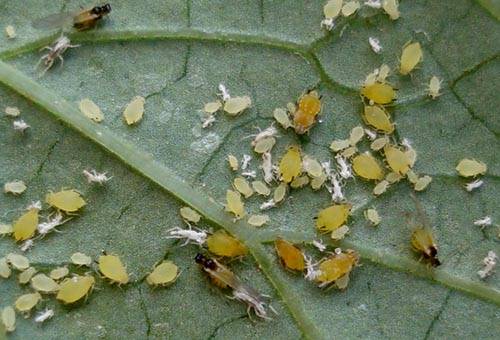
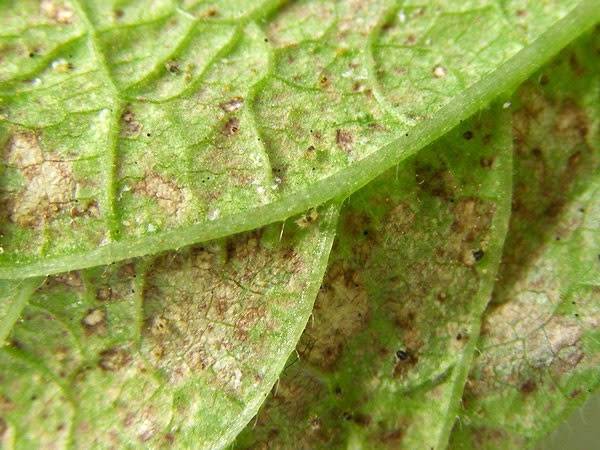
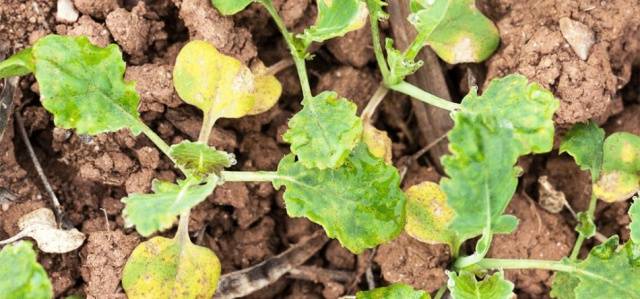
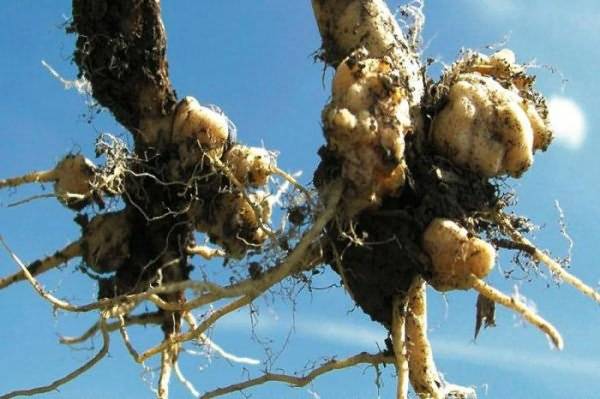
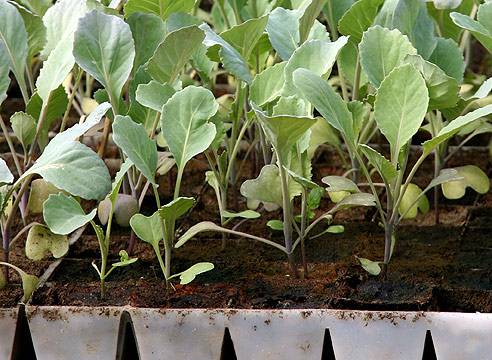
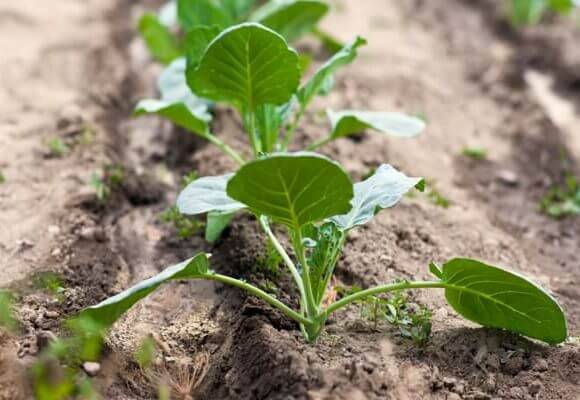
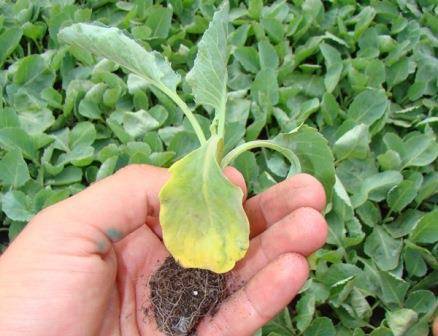
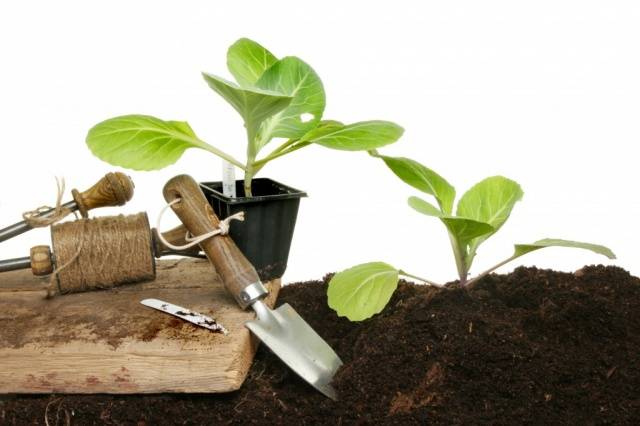
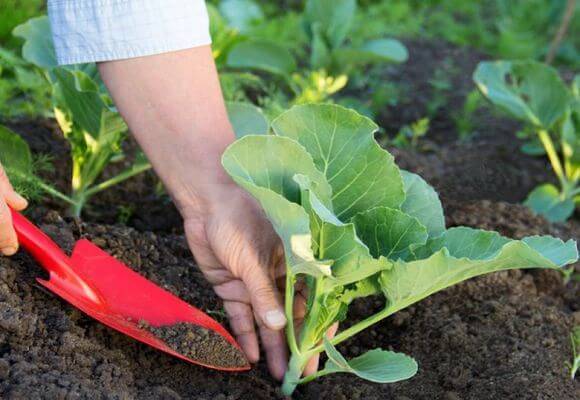


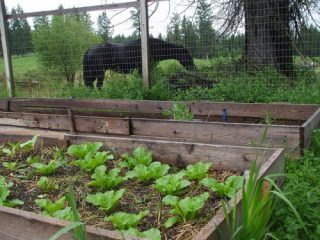

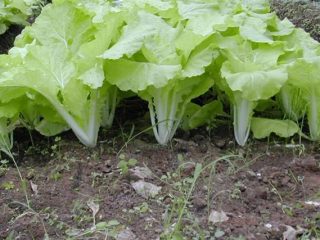
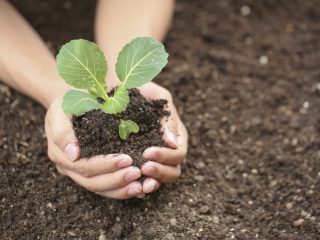
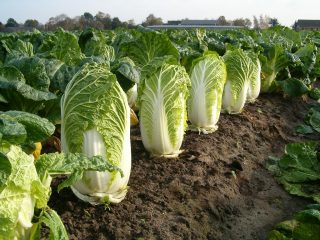
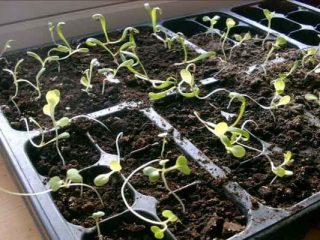

Give advice on how to preserve cabbage.